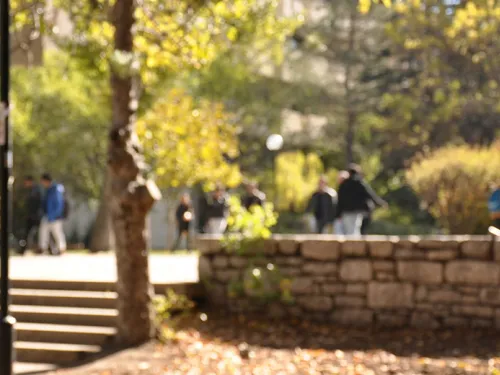
Related Content
Swatting is the deliberate and malicious act of reporting a false crime or emergency to evoke an aggressive response (often a SWAT team) from a law enforcement agency to a target's residence or place of work to harass and intimidate them.
Alarmingly, swatting appears to be on the rise. Kevin Kolbye, a former FBI agent with expertise in swatting, estimates incidents have jumped from 400 cases in 2011 to over 1,000 in 2019. Unfortunately, the actual number is unknown because the FBI does not track swatting as a unique category of crime. Additionally, many local police departments fail to distinguish swatting from false police reports.

The FBI has been aware of swatting for over a decade. Swatting emerged in online communities associated with gamers and hackers. For example, some gamers targeted their rivals by contacting 911 during livestreams to watch online while a SWAT team conducted a raid on their victims.
But the targets of these attacks have never been limited to gamers. One of the earliest high-profile cases occurred in 2005 when Matthew Weigman directed police to the home of a young woman and her father in Colorado to punish her for refusing to have phone sex with him. In 2018, a caller falsely reported an intruder with a weapon at the home of David Hogg, a high-profile survivor of the shooting at Marjory Stoneman Douglas High School and gun violence prevention advocate, causing a SWAT team to respond.
Swatting wastes resources and puts people in danger. These hoaxes take first responders away from actual emergencies, potentially endangering the safety of others. The extent of the financial burden these cases place on taxpayers vary. Following a swatting in Rochester, New York, Lieutenant Aaron Springer estimated the incident cost at up to $15,000. In Denver, a 2015 swatting cost law enforcement $25,000, while an incident in Long Beach, New York is estimated to have cost $100,000 in 2014. These online threats are serious; they can and have led to violence. Swatting puts the targets, responding officers, and other community members in harm’s way and sometimes results in their deaths.
- In December 2017, Casey Viner and Tyler Barriss attempted to swat Shane Gaskill following an online argument during a game of Call of Duty. Gaskill provided them his old address where the uninvolved Andrew Finch resided. Barriss, who had a history of swatting, then called the police claiming Gaskill killed his father and was holding the rest of his family hostage. When the Wichita Police Department, in Kansas, arrived at the scene, Finch went to his front door to see what was going on and was immediately shot in the chest by police. He died within minutes. In 2019, Barriss was sentenced to 20 years in prison, Viner was sentenced to 15 months, and Gaskill was placed on deferred prosecution for their respective roles in the deadly incident.
- In January 2015, James Holly called the Washita County emergency dispatch in Oklahoma, claiming to be Dallas Horton and threatening to set off a bomb at a local preschool. In response to this threat, the police broke down Horton’s door and stormed his home at 4 AM. Unaware that the intruders were police officers, Horton reacted by shooting an officer in the chest several times. The officer survived the incident due to his bulletproof vest.

Many targets of swatting belong to marginalized groups, including women, people of color, and LGBTQ+ people. Swatting is often paired with other methods of harassment in a campaign of hate that can push these targets out of online spaces. As a result, many targets of harassment fear swatting and doxing—a fear harassers often exploit. ADL found that 28% of marginalized groups experienced severe online harassment, including swatting, physical threats, sustained harassment, stalking, sexual harassment, and doxing. For example:
- In August 2022, police arrested Clara Sorrenti, a popular Twitch streamer and transgender activist known by the username “Keffals,” after she was targeted in a transphobic swatting. A threatening email purporting to be from Sorrenti was sent to city counselors, claiming she planned to attack members of the London Parliament in Ontario, Canada, and harm her family. This email’s signature was her deadname, which has not been her legal name for over ten years. Police then raided her home, seized her computers, and booked her under her deadname. Police held Sorrenti for several days before they interviewed her and released her with no charges. Before this incident, Sorrenti’s brother attempted to notify law enforcement after Sorrenti’s address was leaked online, only to be told that this did not constitute a threat. Sorrenti was one of four streamers targeted by swatters in a week.
- An unnamed minor from Canada was arrested in December 2014 after he was linked to a series of swatting incidents and other online harassment. The teenage hacker primarily targeted women who rejected his advances and friend requests on the popular multiplayer online game, League of Legends. He targeted one woman in Arizona several times. He directed the police to her home after claiming to have killed his parents and insisting he would shoot the police arriving on the scene. During one of these swatting attacks, the police dragged her father and brother out of their home at gunpoint. The perpetrator used swatting along with other methods of harassment which included hacking her personal accounts, spamming her phone with hundreds of texts, and posting her parents’ credit card information online. In 2015, the minor pleaded guilty to 23 charges related to his swatting and harassment campaign and was sentenced to 16 months in jail and eight months of community supervision.
- In November 2021, a popular streamer known as Elix was swatted while playing video games on a Twitch livestream. Trolls threatened her in the chat and released personal information, including her address. Someone escalated the harassment by calling the police claiming Elix had slit her brother’s throat and planned to kill herself. Police quickly arrived at her home, guns drawn, and asked her to exit with her hands up before they handcuffed her. This incident was not an isolated event. Within two months, six members of Stream Queens, a group of drag queens on Twitch, including Elix, were also the targets of swatting.
- In August 2019, Ijeoma Oluo, the author of So You Want to Talk About Race, became the target of swatting. Before the attack, her address was posted on a swatting website, and Oluo notified law enforcement about the threat. As a result, when police received a report that shots were fired at her home and two people were killed, they called Oluo before arriving at her home. Following the swatting, Oluo wrote an article detailing her experience, recounting how law enforcement warned her that she would be better off if she stayed quiet until the harassment passed. However, this advice ignores that the goal of such harassment is to intimidate people like Oluo into silence.
Extremists also use swatting as a terrorist tactic. Terrorism is the threat or use of violence to achieve one’s political, ideological, or social aims. In many cases, swatting has been used as a tool for political intimidation where the perpetrator hopes to achieve their goals by putting the targets’ lives at risk.
- Throughout 2018 and 2019, white supremacist John Cameron Denton conspired with three others to conduct swatting attacks motivated by racial animus on 134 locations targeting journalists, government officials, and religious institutions. Denton is a founding member and former leader of the neo-Nazi Atomwaffen Division in Texas. In May 2021, Denton was sentenced to 41 months in prison for his involvement in the swatting conspiracy.
- Three months after Representative Katherine Clark of Massachusetts introduced the Interstate Swatting Hoax Act of 2015, the congresswoman became the target of swatting. The Melrose Police Department received a report that shots were fired in Clark’s home, and they quickly responded by blocking off her street and amassing armed officers on her lawn before learning there was no real danger. The incident was possibly motivated in response to Clark’s legislative efforts to hold swatters accountable for their crimes with stiffer prison sentences and fines. Similarly, state legislator Paul Moriarty was also targeted after sponsoring anti-swatting legislation in the New Jersey General Assembly.

Recommendations
For Tech Platforms
- Bolster and enforce strong policies against hate and harassment. Tech platforms' primary role in mitigating swatting is to stop their platforms from becoming safe havens for hate and harassment. Tech platforms should strengthen their public-facing community guidelines on hate and harassment and collaborate with experts to ensure their policies fit the needs of marginalized communities. Tech platforms should also ensure that these policies are being enforced consistently and equitably across the platform.
- Support targets of swatting and law enforcement in swatting investigations. Swatting attacks are primarily coordinated online, sometimes within networks of people who do not even reside in the same country. For example, some of the logistics for the lethal Wichita swatting incident were coordinated over Twitter. In the wake of these incidents, tech platforms should support targets in several ways:
- Provide targets of swatting with live human support.
- Cooperate with investigators and voluntarily provide all evidence of the crime on their platform.
- Coordinating response to doxing and swatting. Swatting often occurs in tandem with criminal doxing (revealing personally identifiable information online to inflict harm such as death, injury or stalking). Platforms should ensure that their efforts around detecting and actioning criminal doxing are combined with preventative measures related to swatting. For example, suppose a user has been the target of criminal doxing. In that case, the platform should either offer the user the option for the platform to provide the relevant information to law enforcement or provide resources on how the target should report the incident.
For Lawmakers
- Strengthen laws against swatting and severe online harassment. According to ADL’s survey "Online Hate and Harassment: The American Experience 2022," 82 percent of respondents agree laws should be strengthened to hold perpetrators of online hate accountable for their conduct. Several states have recognized the significant threat posed by swatting and enacted anti-swatting legislation that distinguishes this crime from simple false police reports. While swatting can be prosecuted under various existing federal laws and anti-swatting legislation has been proposed in Congress, there is currently no federal statute specific to swatting.
- Designate resources to increase understanding and mitigate swatting. Despite the rising prevalence of swatting and its potential to turn lethal, the data on this trend is limited. In 2022, Maryland recognized this information gap and created a task force to understand swatting better and make legislative recommendations. Federal, state, and local governments should research this dangerous phenomenon to understand the perpetrators and targets and determine how frequently these incidents are prosecuted. This information could better inform 911 operators and enable law enforcement officers to identify and respond to swatting.
For Law Enforcement
- Improve training. Law enforcement needs to know what swatting is and how perpetrators seek to weaponize them to intimidate and harm their victims. Additionally, not all police departments have the resources and skills to investigate crimes that occur online thoroughly. Increasing training for law enforcement personnel can help responding officers identify perpetrators, support victims, and guard against this practice while ensuring they appropriately respond to emergency calls.
- Improve information sharing around incidents of swatting. The Seattle Police Department uses Rave Facility to store and share information about previous swatting incidents or threats. Under this system, 911 operators simultaneously dispatch the emergency response team and check the database to see if there has been a history of swatting calls directed at the location. If there are concerns, the operator shares this information with the first responders, who will still arrive at the scene. This type of information sharing can help guide law enforcement arriving on the scene and works to keep the targets of swatting and the responding officers safe. Following the deadly swatting incident in Wichita, the police department developed a similar swatting alert system for those concerned they could be a victim of swatting.
- Treat swatting as a unique category of crime. The FBI does not track swatting in national crime statistics. As a result, it is difficult to know the exact number of cases of swatting each year, limiting our ability to understand and combat it.
For Individuals
- Avoid sharing personal information online. It is essential to practice safe internet habits that protect your identity online. Avoid checking into locations on social media platforms, posting photos of your home online, or sharing your phone number or address on social media.
- Enhance your online security. Regularly changing and using unique and complex passwords can reduce the risk of your accounts becoming compromised and an attacker gaining access to your personal information. Additionally, setting up two-factor authentication can improve the security of your accounts.










